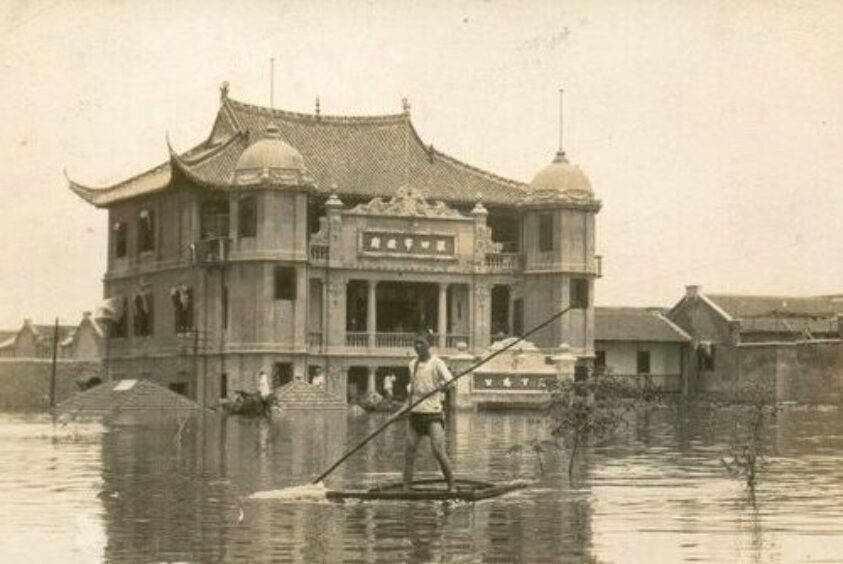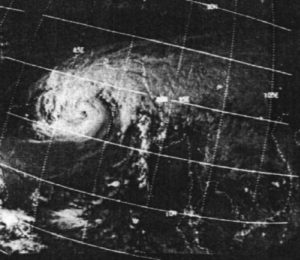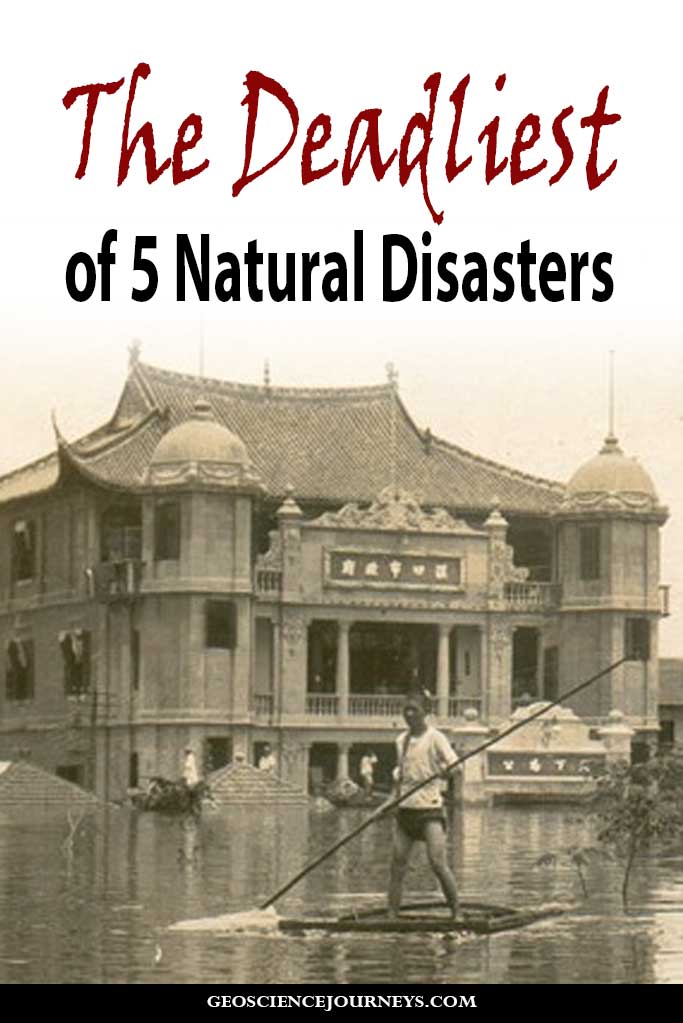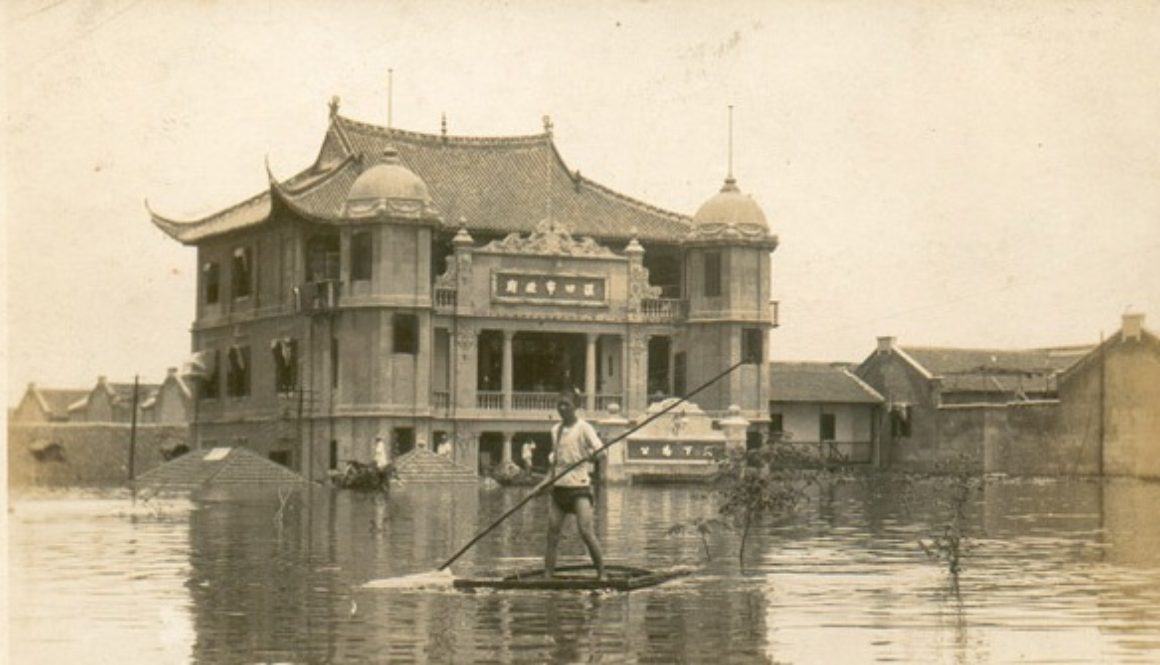The Deadliest of 5 Natural Disasters

Natural disasters have been plaguing the Earth since the beginning of its existence. The rock record gives us clues to this with mega-storm ripples, impact craters, volcanic debris, and giant fault scarps. Although humans have only been around for a relatively short segment of Earth’s history, we’ve encountered plenty of these natural disasters.
We tend to remember the events that happened in our own lifetimes as the worst. We know this isn’t always the case though as different cultures kept written records and allowed us to compare events of the past to the present. The following are the known deadliest of five different types of natural disasters.
Deadliest Flood: 1931 China Floods
- Death toll: 3,700,000
Possibly the worst natural disaster of the 20th century, the Yangtze River in China reached its highest levels in flooding ever recorded. It negatively affected the population for months afterward. It is estimated that around 150,000 people drowned during the flood, but 2 million people died from starvation.
In the years before the flood, China had experienced a long drought. The preceding winter though was especially harsh and brought much snow and ice to the mountains. As the meltwater ran downstream in the warmer months, a continuous rainy season accompanied and bombarded the flow of the Yangtze River. The floods affected 69,000 square miles, roughly the size of North Dakota.
Deadliest Earthquake: 1556 Shaanxi Earthquake of China
- Death toll: 830,000
At a magnitude 8, the Shaanxi earthquake is thought to be the deadliest recorded earthquake in history. The population of the two nearest provinces was reduced by 60 percent from the effects. Many of the people were crushed by fallen buildings.
The records of the time chronicle 26 other earthquakes, but the 1556 earthquake records contain a unique level of detail. The earthquake is said to have lasted only a few seconds. In that time though, it leveled mountains, changed the course of rivers, and caused flooding and fires that lasted for days.

Deadliest Volcano: 1815 eruption of Mount Tambora of Indonesia
- Death toll: 71,000+
The largest volcanic eruption ever recorded occurred at Mount Tambora of present-day Indonesia on April 10, 1815. The explosion was rated 7 out of 10 on the Volcanic Explosivity Index (VEI) and released a volume of approximately 31 cubic miles of ash. At 14,100 feet, the volcano was one of the tallest Indonesian mountains. The pyroclastic event decreased its elevation to under 10,000 feet.
After the event, dust and ash circled the Northern Hemisphere high in the atmosphere. Average temperatures dropped a full degree, and the year of 1816 was known as ‘The Year Without a Summer.’ This caused crop failures, food shortages, and flooding to ensue over the next decade.
Deadliest Blizzard: 1972 Iran Blizzard
- Death toll: 4,000
The deadliest blizzard of all time occurred in Iran on February 3, 1972 and lasted until February 9th. Following a four-year drought, the snowstorm dropped up to 26 feet of snow in some areas and covered a region the size of Wisconsin. It buried entire villages in -13 degree Fahrenheit temperatures, snapping power lines and burying railway escape access.
When rescue workers attempted to find survivors in the white snowdrifts of what used to be villages, they only turned up 18 frozen bodies. As another blizzard moved in directly after the first, the rescuers were forced to evacuate. Many people died trying to wait out the storm in their homes.

Deadliest Tropical Cyclone: 1970 Bhola Cyclone of Bangladesh
- Death toll: 500,000+
The deadliest recorded tropical cyclone remains the 1970 Bhola cyclone that struck Bangladesh and West India. Bhola was the sixth and strongest cyclone of the 1970 North Indian Ocean cyclone season. With wind speeds up to 130 miles per hour, the storm was equivalent to a Category 4 hurricane.
The storm unfortunately made landfall at the same time as high tide. What resulted was a massive storm surge of 35 feet that flooded the low-lying regions of the Ganges Delta. The surge wiped out island villages and destroyed crops and cattle throughout the region. The people living in the region were not warned to evacuate. Many were killed overnight in their sleep when the storm surge hit.
Natural disasters come in many forms of devastation. Early warning systems have helped prevent such extreme loss of life numbers. And yet, there are still events that have not been predicted, prevented, or controlled. Maybe someday in the not so distant future, someone will crack the code on predicting these events with better accuracy. Maybe that someone will be you.
Check out how scientists are predicting space weather and its effects on Earth here.


